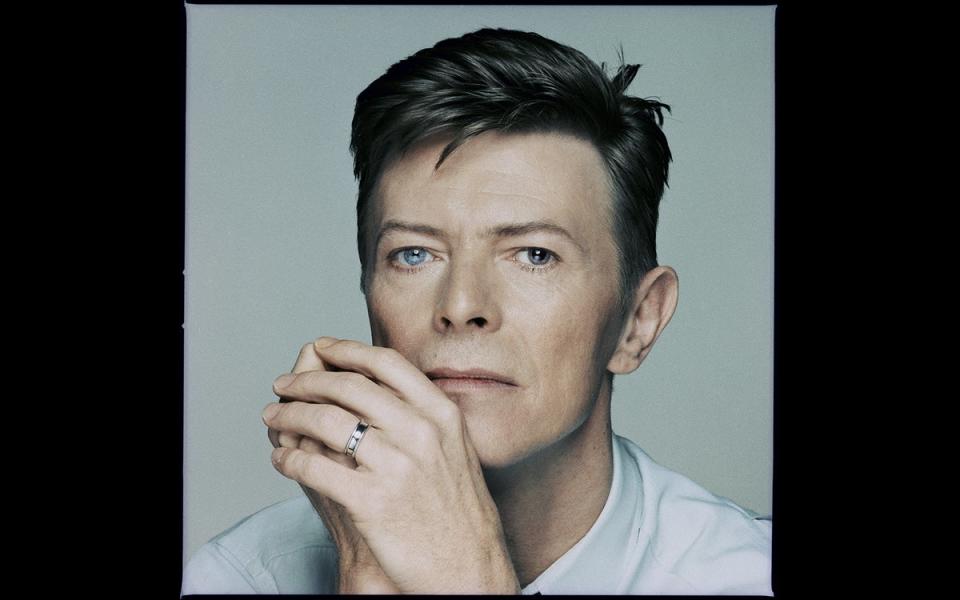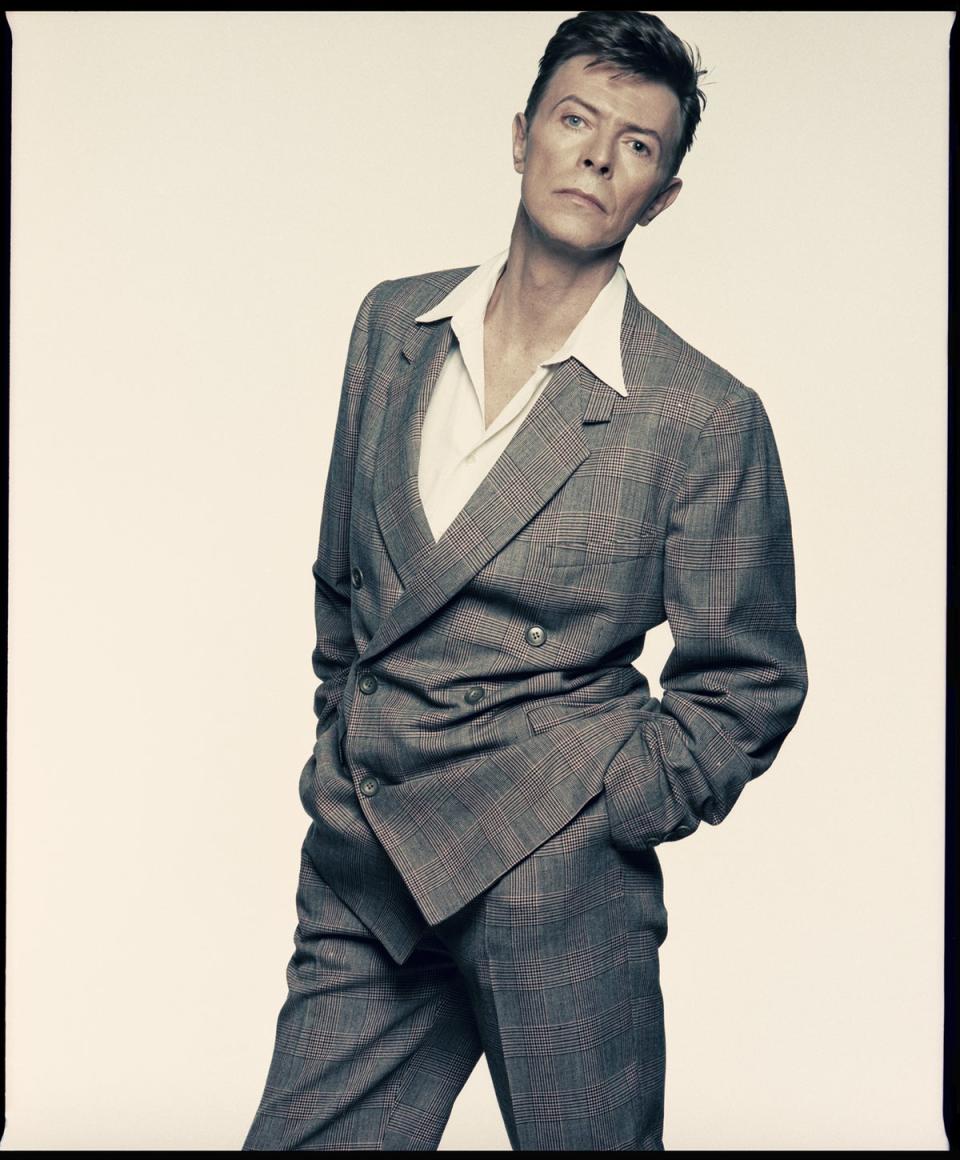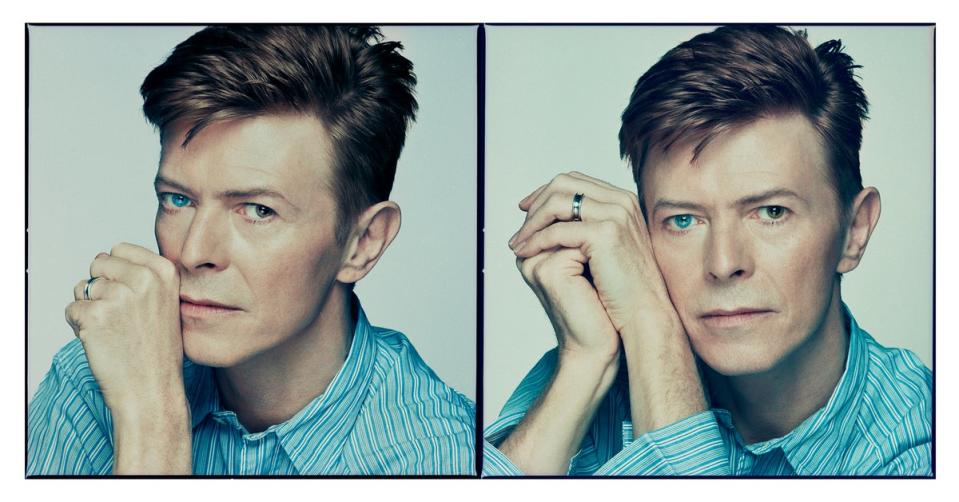It was a Sunday, December 12, 1992, about a week before he was to disappear to Mustique for the holidays. David Bowie was 45 and in promo for his 18th album, Black Tie White Noise, which would be released in a few months.
He found his way among a few photographers and saw what it felt like to get back on the market after a few years of fooling around with his boy band Tin Machine, a project that increasingly resembled the fantasy of a particularly perverted real estate agent. He had been married to Iman for six months and his enthusiasm to make music again had a lot to do with renewed energy.
He was basically happy.
Bowie arrived at Metro Studios in Clerkenwell, accompanied as always by his long-time assistant Coco. She was everything to him, as he was everything to her. She was soft and hard, kind and tough, small and indulgent, whatever he wanted. Today she was all lightness, just as her load was doubly so. Smiling, laughing, excited to get on with the day.
The photographer was Kevin Davies, the least demonstrative of his kind, yet a man who had built relationships with all the major magazines of the day: i-D, The Face, Arena, The Sunday Times Magazine and Vogue. Bowie immediately warmed to him, and the results of that meeting now form the basis for an exhibition opening next month at the Fitzrovia Chapel, just north of Oxford Street.
They arrived at the studio that morning, photographer and subject, almost at the same time, and began plotting and planning the day in the most orderly manner possible.


Bowie was curious, talkative and curious to see where the shoot would go. For 25 years he had managed photographers, allowed them to manage him, and had an almost co-dependent relationship with his image, but, almost unbelievably, he softened.
He wasn’t going to erase the memory of Tin Machine through some extreme sight, but rather through a deliberate development. And so here he was, exchanging Polaroids with Davies, and enjoying the box of Bond Street clothes that now littered the studio floor.
He took breaks in the locker room between shots. Kevin’s interpretation was that he needed moments of privacy to feel comfortable in front of the camera. During lunch, Bowie was enthusiastically talking in hair and makeup about the music they were listening to and the clubs they were going to. He was very friendly and involved with everyone during the shoot.
Still, Kevin was quite surprised by his restraint and the measured nature of his attitude – but it almost certainly reflected Davies’ own way of working.
During the shoot he was warm and open to ideas, down to earth and easy to work with. He was interested in collaboration, especially towards the end of the day when he had completely calmed down, which resulted in some of the more personal portraits they created, many of which can be seen in this exhibition. The theme of the shoot was probably the opposite of most sessions like this at the time; the goal was to hone an idea with as little variation as possible. So this was a very special kind of London day.
A selection of Davies’ images were subsequently approved by Bowie for press use, after which Kevin placed the original rolls of film, contact sheets and prints in storage where they remained for almost 30 years. In 2020, during lockdown, Davies unveiled the boxes to reveal perfectly preserved film negatives of more than 400 images from that one day with Bowie, the details of which had been overshadowed by the indistinguishable memory of a luminous presence.


Kevin decided to do something about it and spent months going through the images, narrowing them down to the 24 that will soon go on display in the Fitzrovia Chapel.
“In the anxiety of lockdown, I found solace in tracing my career through stashed negative boxes,” says Davies. “I finally got the chance to do something I’ve wanted to do for so long; rediscovering former jobs in their entirety. For me, this exhibition is an opportunity to show the photographic process outside of an assignment.
“Some images are in diptychs and triptychs, inspired by Richard Avedon. I wanted to convey a progression in the shoot and show the subtle differences between frames. It has been a process of reuniting his original selections with my selections.”
While he was making his selections, Kevin asked me to help put together the exhibit, which was one of the best offers I’ve had in a while. Who wouldn’t want to curate a Bowie exhibition? I have always enjoyed working with Kevin, not least because of his eye for detail.
“The color of the images was the result of my long relationship with my printer Brian Dowling, who printed the original prints in 1992,” says Davies. “I also had the desire to re-edit the footage, which somehow might not work for every rock star, but it does work for Bowie.
“I have a very clear memory of looking through the viewfinder and thinking, ‘It’s David screwing Bowie, don’t screw this up.’
“What did we talk about? Both are Londoners.”


The exhibition has Bowie as its subject, but is also a representation of the afterlife of analog photography. It explores the intersection of archive and creative memory.
This is a fascinating body of work because it is a visual story that takes place over the course of one session in one day. Not only does it demonstrate Bowie’s extraordinary attention to detail, but it also demonstrates Davies’ ability to shape and catalog that story.
Madeleine Boomgaarden, director of Fitzrovia Chapel, said: “These quietly observed and very beautiful images of Bowie fit perfectly into the quiet elegance of the chapel. We are delighted to host images of this London icon in the heart of the city where he grew up.”
She is right. And I guarantee it will be a spiritual experience for everyone who comes.
David Bowie – A London Day by Kevin Davies is at Fitzrovia Chapel from March 1 to 20; fitzroviachapel.org.uk